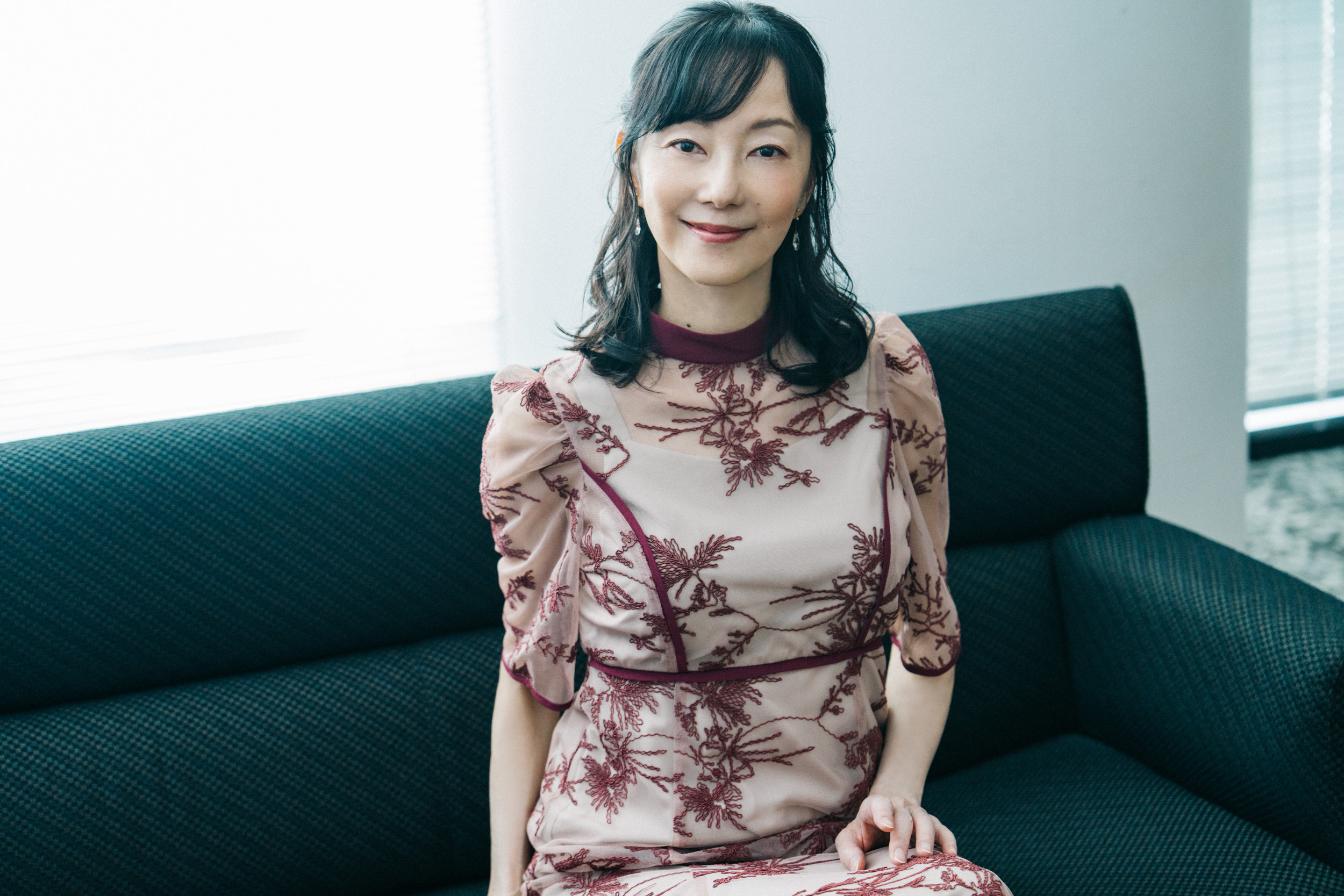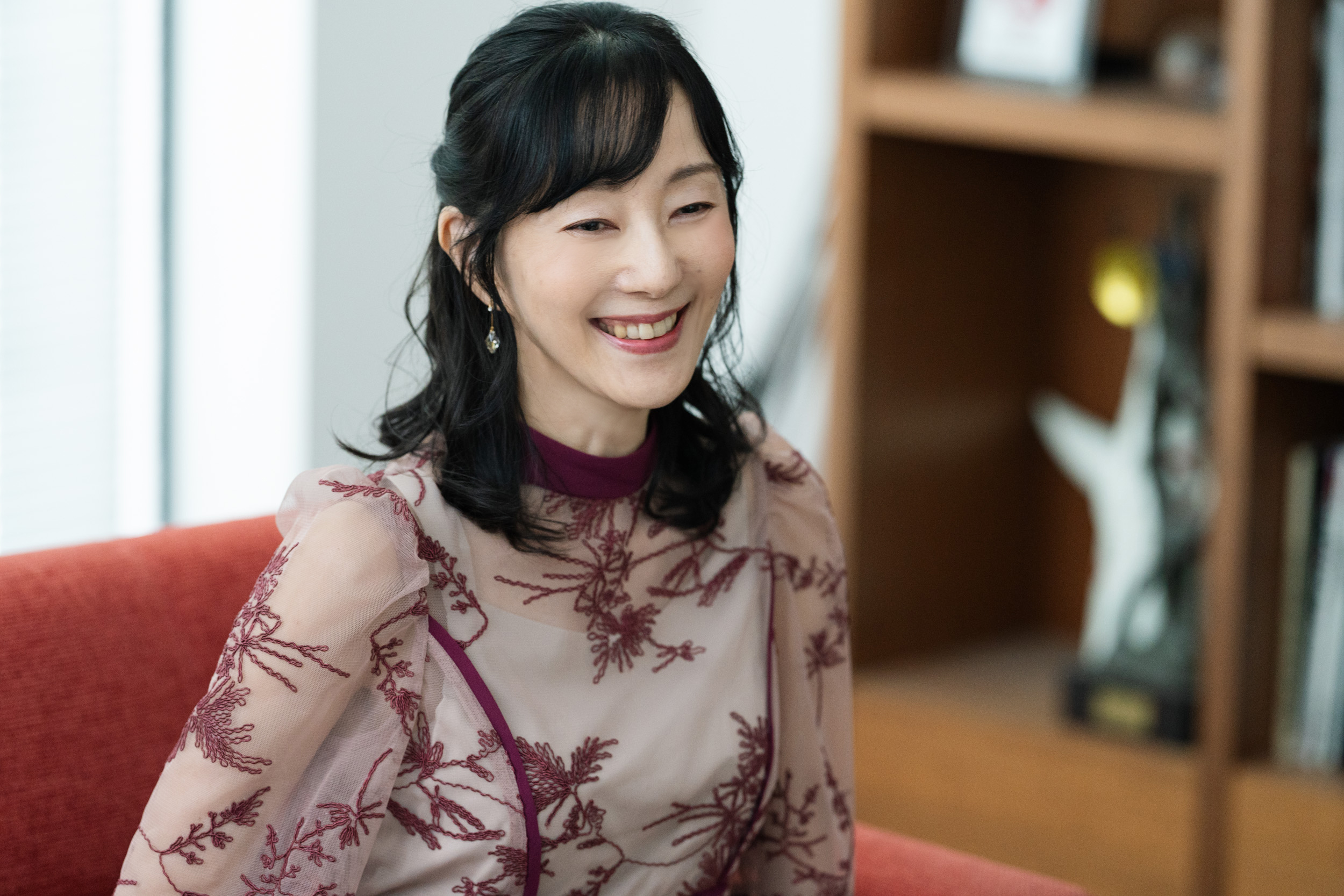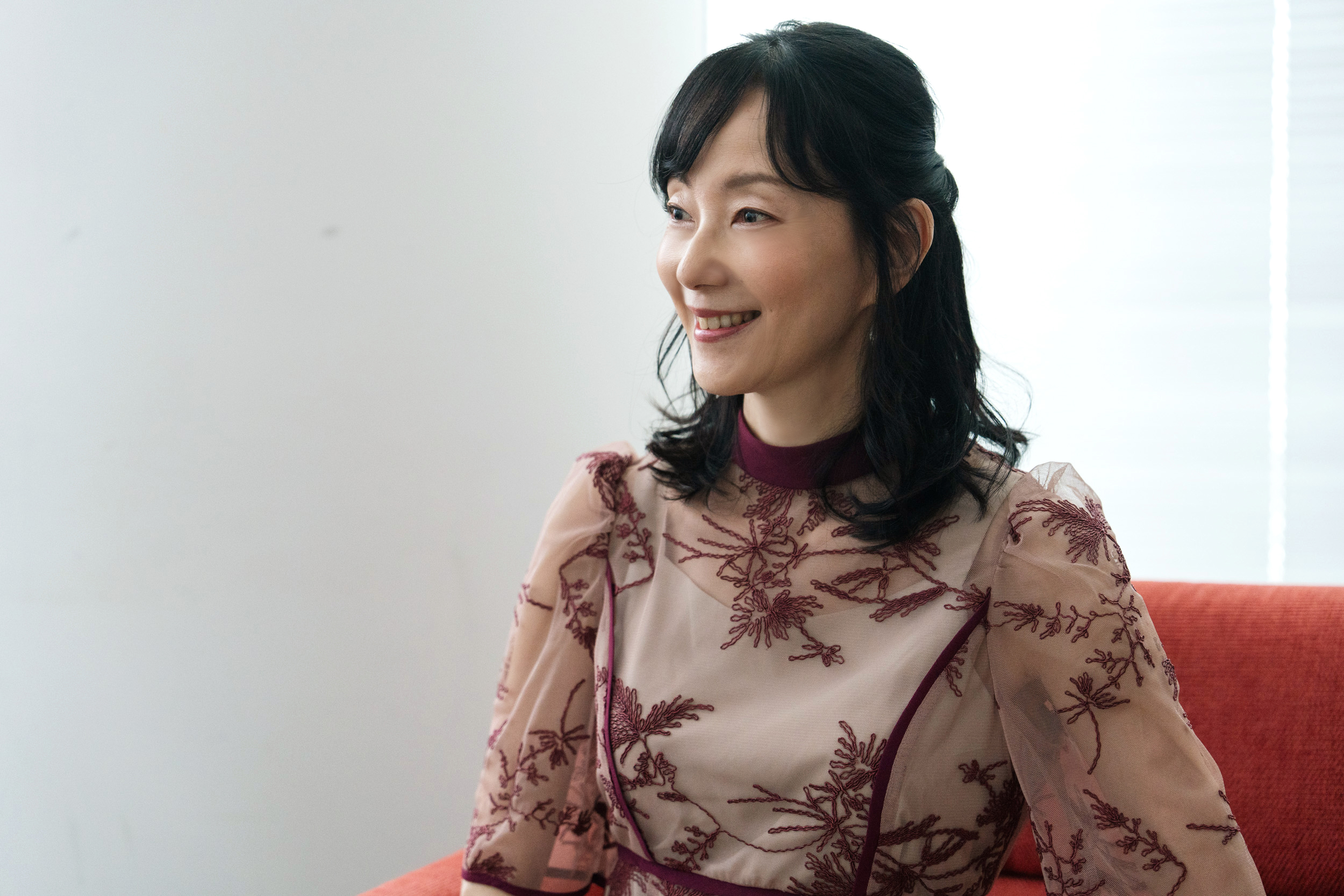
The Essence of Major Motoko Kusanagi From the Perspective of Voice Actor Atsuko Tanaka: Going From an Unknown Being to a United “Partner” With One Heart #01
Text: Satoshi Asahara / Photo: Kazufumi ShimoyashikiIn November 2023, the second restructured feature film version of the Netflix series Ghost in the Shell: SAC_2045 season 2, Ghost in the Shell: SAC_2045 The Last Man, was released. The voice of the main character, Major Motoko Kusanagi, is played by Atsuko Tanaka, affectionately known as “Major” by fans of the work. For more than a quarter of a century, since the 1995 movie Ghost in the Shell, she has been breathing life into the fully prosthetic body of Motoko. How did she interpret the character with many mysterious aspects? We asked her to reflect on the journey with her partner, from the impressions when they first met to the changes they experienced in the latest work.
#01 First Use of a Jikagame Jar and Days of Trial and Error
—Could you tell us when you first worked on a Ghost in the Shell title?
Atsuko Tanaka (“Tanaka”) I started reading the original manga in order to participate in voice actor auditions for director Mamoru Oshii’s Ghost in the Shell (1995). The content is difficult for fresh beginners, and I was overwhelmed from the first page. I had been reading it little by little, including the extensive annotations, with wrinkles between my eyebrows. The director, Kazuhiro Wakabayashi, told me, “This is a completely different work, so don’t read the original.” That was a relief. *laughs* So, I went into the actual audition having only read the script written for the audition.

—After that, when you landed the role of Motoko and entered the world of Ghost in the Shell, depicted through Director Oshii’s lens, what were the things that appealed to you?
Tanaka: Although it is a science fiction work set in a society in the near future, it is also a human drama that depicts the true nature of human beings, and I thought that the accuracy and balance of how it depicts this were unique. Moreover, at the time, there was no other work in which the main character was a macho, fighting woman like Motoko, so I remember being very excited during the recording sessions. I had a feeling that a new world would open up with this work that no one had ever seen before, and it was an honor to be able to witness that as a voice actor.
—At that time, did you imagine that your relationship with Motoko would last this long?
Tanaka: In 1995, Ghost in the Shell was screened at the Tokyo Fantastic Film Festival, and people in the audience looked like they had question marks floating over their heads. The movie was far ahead of its time, and I remember that it took a while for it to become a hit. At the time, I had no idea that sequels would be made. Even after Ghost in the Shell: S.A.C. (2002) ended, a long time had passed, so I thought I might not have the opportunity to be involved with Ghost in the Shell anymore. For that reason, I felt truly honored when I learned that the Ghost in the Shell SAC_2045 series was starting and that I would be able to play Motoko again.

—What approach did you take to create Motoko’s voice at first?
Tanaka: She was a mysterious being to me, somewhere between a human and an android, and preparing for her role was like grasping at the clouds. In any case, I kept in mind what Director Oshii described to me as “a woman who has experienced many things and has a comprehensive view of the world.” Other clues included the fact that “only her brain is real and her whole body is prosthetic,” and “it’s not certain exactly how old she is, but she’s probably in her 40s.” Based on that information, I tried speaking in a reserved way without inflections, I lowered the tone of my voice, and I acted the character through trial and error.
—Did Director Oshii explain the detailed setting of the entire work and the meaning of the lines?
Tanaka: I had a lot of questions. At the time, I was doing a lot of dubbing work for foreign movies, so I would watch the finished footage in advance and make sure to understand and express everything before the actual production. That’s why, even in Ghost in the Shell (1995), if there was something I didn’t understand after reading the script, I would persistently ask Director Oshii and Sound Director Wakabayashi before the recording session. In particular, I didn’t understand the technical terms related to firearms, such as “Mateba” (the manufacturer of Togusa’s favorite gun) and “jam” (improper loading), so there were times when I persistently confirmed and ended up being looked at with bewilderment. Unlike dubbing for live-action movies, which already includes images and voices, in animation production, the vision for the finished product is only in the director’s head. In order to get closer to that vision, I think I tried to have active discussions with Director Oshii.
—At that time, audio processing technology wasn’t as developed as it is now, so it seems that Director Oshii had a hard time recording the voices in the cyber space he was imagining.
Tanaka: The most difficult scene was the one where Motoko was diving in the sea. When Motoko and Batou return to the ship and are having a conversation, Batou is surprised to hear Motoko’s voice suddenly echoing and asks, “Was that you just now?” At first, it was recorded normally, but it seems that the processing technology available at the time did not produce the ideal sound, so they decided to re-record it later. So, when I went inside the booth, there was a large plastic bucket sitting there. *laughs* I ended up sticking my head in there and picking up the sound with a microphone. In addition to plastic buckets, they also brought in large ceramic jars. I directly stuck my head in and recorded various patterns of voices while changing the angle of the microphone. I have not confirmed which pattern was ultimately adopted, but I think it was probably the voice I made using a jikagame (jar for brewing shochu liquor). I have never had an experience like this before or since.

—To depict society and technology of the near future, you relied on analog methods during the recording sessions.
Tanaka: A similar episode that left an impression on me was the last scene where Motoko is asked by the Puppet Master to fuse with her, and Batou shouts Motoko’s name. With current technology, the voice actor could shout from a certain distance from the microphone, and the mixer would make the rest of the adjustments. But Director Oshii pursues more realistic art, so he recorded it in a large studio. Mr. Akio Otsuka, who plays Batou, was told, “Move further away from the microphone! Move further away!” In the end, he stood on a chair in the corner of the room and shouted, “Motoko!” I was able to make it through the recording sessions even though I had little experience with anime because I was working with senior voice actors who I respect, such as Mr. Akio Otsuka and Mr. Koichi Yamadera, who plays Togusa. In the work, they are my bosses, but for me personally, both Mr. Otsuka and Mr. Yamadera are my strongholds.
Continued to #02 Atsuko Tanaka, Considering a Prosthetic Body Plan
ATSUKO TANAKA
Voice actor. Born in Guuma Prefecture. In anime, she has played Motoko Kusanagi in the Ghost in the Shell series, Mary Sera and Chihaya Hagiwara in Detective Conan, and Hanami in Jujutsu Kaisen. Her dubbing roles include those of Nicole Kidman and Cate Blanchett. In 2020, she won the 14th Voice Actor Award for Foreign Film/Drama.

